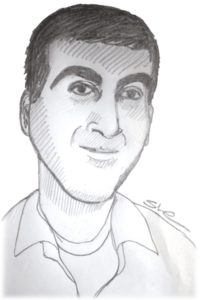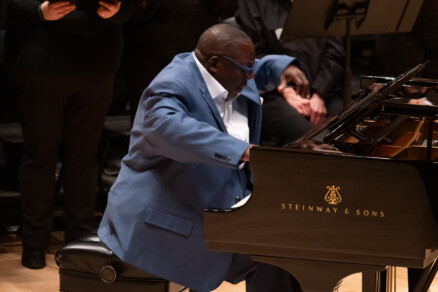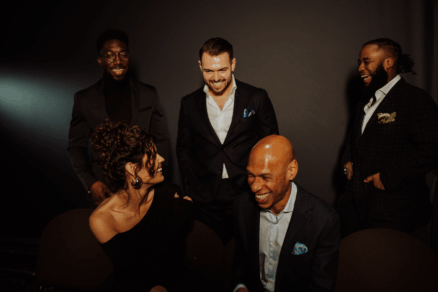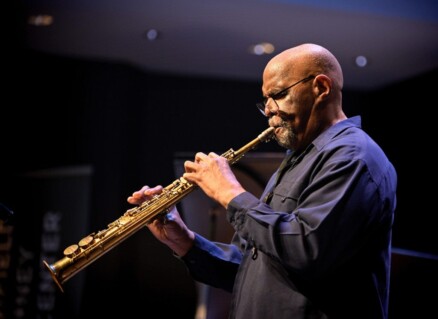Do festivals grow the jazz audience?

Sriram Gopal
Swing District
The DC Jazz Festival, currently in full swing, is now in its ninth year. This time around, it once again boasts a lineup of world-class talent with performances taking place across all four quadrants of our nation’s capital. Many values to staging a jazz festival are obvious. The concentration of talent allows for creative programming options, and also permits attendees to experience many events in a compressed time span. And there is the intangible benefit of consuming art and entertainment in a shared setting, with thousands of others.
This column, however, focuses on a broader quandary: whether jazz festivals really serve to grow the jazz audience, or if they are simply places for the already converted to congregate. As it turns out, this is not an easy thing to answer. First, for the purposes of this discussion, we’ll break out major festivals into two categories – those that focus exclusively on jazz, and those that feature “crossover” acts or even major pop and rock acts. The primary question here is whether either one of these models serves to bring people to jazz; identifying which model is more effective is secondary.
Our hometown festival has largely remained in the first category, limiting its scope to artists that would be categorized as jazz by any music vendor (although this year’s DC Jazz Festival performance by the Roots represents something of a departure). Charlie Fishman, the DC Jazz Festival’s executive producer, looks to his own history to explain why this is the case. Fishman spent several years as Dizzy Gillespie’s manager toward the end of that jazz icon’s life, and he sees the festival as a means to further Gillespie’s ethos. Fishman also points to a compliment given to him by piano great Ellis Marsalis: After receiving an award from the festival, Marsalis made a point of thanking Fishman for keeping the festival 100 percent jazz.
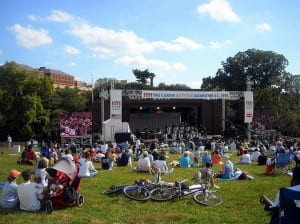
“With the Roots, you stretch a little. With world music, you stretch a little. But it’s still important for me to reflect this culture,” Fishman explained. “If we bring in Springsteen or U2, of course people are going to come, but is it jazz? No.”
That said, Fishman is very cognizant of the fact that it is necessary for the festival to take steps to draw in new audiences. “Of course I want to introduce people to the music. I’m guessing, a plurality of people who might show up at a CapitalBop event might not hang out at Bohemian [Caverns],” Fishman said, referring to the variety that he perceives this website’s series of shows adding to the festival. “I don’t care how the hell people come to jazz, I just want to make sure people are entertained and enriched.”
A different approach, but one with supposedly similar justifications, comes from festivals that host major acts as a gateway to draw audiences to their event. The New Orleans Jazz & Heritage Festival is the quintessence of this approach. This year’s main stage at Jazz Fest featured the likes of Billy Joel, Fleetwood Mac and the Dave Matthews Band. While these artists might show the influence of jazz and blues, no one could ever refer to them as jazz artists. The thought behind this approach is that once people enter the gates, they can then expose themselves to the broader palette of New Orleans culture by going to the jazz tent or the gospel tent, or sampling local cuisine. In some ways, calling the event the New Orleans Heritage & Music Festival might be more appropriate, because the musical focus is clearly not primarily on jazz.
It’s difficult to come by hard numbers that indicate whether either programming model actually increases the number of people who will go on to attend other jazz happenings or buy jazz recordings. The most comprehensive research on jazz audiences was done by the Jazz Arts Group as part of its Jazz Audiences Initiative. Unfortunately, these surveys do not reach the level of nuance that we are trying to examine here. These studies gathered a great deal of important demographic data and information on audience preferences, but did not address the questions presented here. In addition to examining these data and reaching out to organizers for the festivals in D.C. and New Orleans, I contacted individuals at the National Endowment for the Arts, SFJAZZ, the Virginia Blues & Jazz Festival and other regional arts institutions.
Several of them offered anecdotal evidence suggesting that both these models, and jazz festivals in general, do grow the jazz audience. For example, Jim Byers, who works in the Arlington Cultural Affairs department and is a driving force behind the Rosslyn Jazz Festival, offered a story about a young couple that grew to love salsa after attending a concert he produced featuring the 21-piece Mambo Legends Orchestra.
“I do know that the right exposure at the right time can indeed create new fans,” Byers said. “You can’t win them all. But I do believe that we do win converts at festivals.”
Yet in my own experience, I have taken numerous friends to jazz events in all settings, from listening clubs to dance clubs to concert halls, always ensuring that the performance was free or at a low cost. I also make sure to take “newbies” to shows that offer some level of accessibility so that they won’t be intimidated by music that is too esoteric for the uninitiated ear. While these folks often seem to enjoy themselves on any given occasion, those that go on to actively appreciate jazz remain very much in the minority.
There is, at best, limited evidence that those who attend jazz festivals are likely to become more interested in the music. At the same time, I did not come across any evidence suggesting that either a “pure” or “hybrid” festival model is more effective at drawing listeners to jazz.
In the advocacy world, there is a mantra that without data, it is impossible to identify a problem. Without a problem, there is no money. Without money, there is no solution. While market research is expensive, arts organizations and festival organizers need to raise money to stage these events – whether those funds come from private, public or foundational sources. The bottom line is that gathering hard evidence that these festivals actually broaden the audience for this great art form might make this process just a tad easier for those who advocate for its growth.
—
Sriram Gopal is CapitalBop’s monthly columnist. He can be reached at [email protected].
DC, DC jazz, DC Jazz Festival, DCJF, jazz, jazz festivals, New Orleans Jazz & Heritage Festival, Washington
